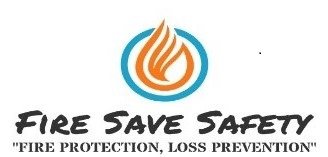Understanding Fire Accidents: Causes and Prevention
Fire accidents are a significant concern across the globe, leading to substantial property damage, injuries, and even loss of life. A primary cause of such incidents is electrical faults, which can stem from outdated wiring, overloaded circuits, or faulty appliances. According to the National Fire Protection Association (NFPA), electrical failures or malfunctions contribute to an estimated 13% of home fires annually. Ensuring regular electrical inspections by certified professionals can significantly reduce this risk.
Another prevalent cause of fire accidents is unattended cooking. The U.S. Fire Administration reports that cooking-related fires account for nearly half of all residential fires. These typically occur when stovetops are left unattended or flammable materials are kept too close to the heat source. Implementing safe cooking practices, such as never leaving cooking food unsupervised and keeping flammable items away from the stove, can help prevent these accidents.
Flammable materials, if not stored correctly, pose a significant fire hazard as well. Common household items such as cleaning agents, solvents, and even certain types of fabrics can ignite easily. Proper storage in designated areas away from heat sources and ensuring that these materials are kept in appropriate containers are crucial preventive measures.
Public awareness campaigns and educational programs play an essential role in fire accident prevention. Raising awareness about the common causes and preventive strategies through community outreach, school programs, and media campaigns can educate individuals about fire safety. For example, fire departments often conduct drills and distribute educational materials to help the public understand the importance of smoke detectors, fire extinguishers, and having an evacuation plan.
Furthermore, incorporating fire safety education into school curriculums ensures that children learn these vital skills from a young age. By fostering a culture of awareness and preparedness, communities can collectively reduce the incidence and impact of fire accidents.
Fire Safety: Escape Plans, Extinguishers, and Professional Services
Ensuring fire safety begins with the development of a comprehensive fire escape plan. An effective escape plan should be simple, easily understood, and practiced regularly. Every member of the household or organization should be familiar with multiple exit routes from each room and know where to meet outside once they have evacuated. Regular drills will help to instill these procedures, making them second nature in the event of an actual fire emergency. The importance of practicing these drills cannot be overstated, as it significantly increases the chance of a safe and orderly evacuation.
Equally crucial to fire safety are fire extinguishers. There are several types of fire extinguishers, each designed to combat different classes of fires. For instance, Class A extinguishers are suitable for ordinary combustibles like wood and paper, while Class B extinguishers are effective against flammable liquids such as gasoline. Class C extinguishers are used for electrical fires. It is vital to have the correct type of extinguisher accessible in various locations throughout a building and to ensure users are trained in their operation. The PASS technique—Pull the pin, Aim the nozzle, Squeeze the handle, and Sweep the base of the fire—is a straightforward and effective method for using a fire extinguisher.
Professional services play a critical role in maintaining fire safety. Regular maintenance of fire safety equipment, such as fire extinguishers and smoke alarms, is essential to ensure they function correctly during an emergency. Fire risk assessments conducted by certified professionals can identify potential hazards and recommend necessary measures to mitigate risks. Furthermore, the role of fire extinguisher marketing, sales, and services is significant in raising awareness and providing communities with the necessary tools to combat fire emergencies effectively. By staying informed and prepared, individuals and organizations can greatly enhance their safety and resilience against fire accidents.

